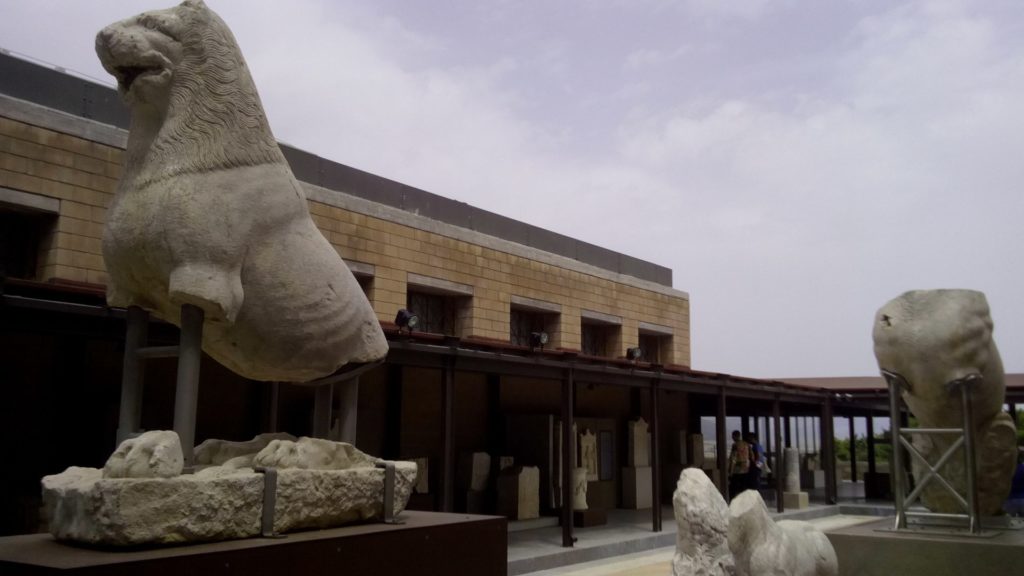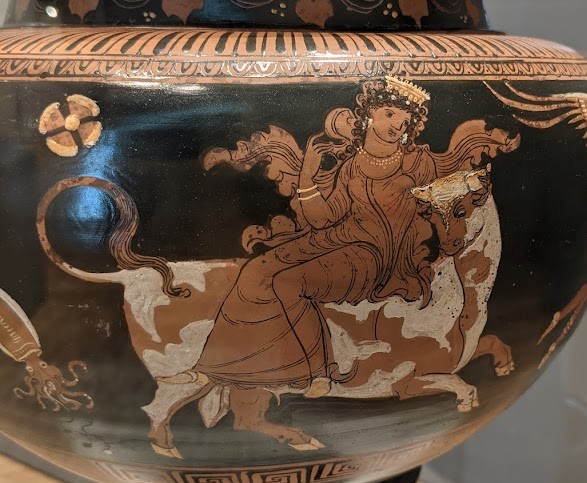
Thebes is an ancient Greek city which has significantly contributed to Greece’s history and mythology.
Theban myths, such as those of Hercules, Dionysus, and Oedipus among others, popped up at the end of the second and beginning of first millennium BC, adding to the wealth of Greek mythology.
The Central Greece city-state was part of the Mycenaean civilization during the Bronze Age. It was founded at the end of the third millennium BC. Excavations have revealed cist graves dated to Mycenaean times containing weapons, ivory, and tablets in Linear B script.
In ancient times, Thebes was known as the Eptapyli and Eptalofi, meaning it “has seven gates” and “is built on seven hills.” Its history and myths are often peppered by the number seven.
The most famous myths related to the birth and history of the city is the myth of Cadmus from Tyros, who was the founder of the city, Dionysus, Heracles, and the myth of Oedipus.

Cadmus of Thebes
The city founder and first king, Cadmus from Tyros—of modern day Lebanon—is known to have brought the writing and alphabet from the Phoenicians to the Greeks. Through the Greeks, it was eventually adopted by many other parts of the world. The life of Cadmus from Tyros was long and adventurous. His sister, Europa, was abducted by Zeus who was disguised as a white bull. Cadmus left his home along with his brothers to search for Europa. He never found her, but the Fates had an extraordinary life in store for him.
Cadmus went on a pilgrimage to the oracle of Delphi to ask about his sister. The oracle advised him to stop searching for Europa and to establish a new city instead. He was instructed to follow a cow he would find outside of the oracle’s temple and build a city on the spot where the cow would stop to rest. When the cow reached Boeotia, it did just that, and this is where Cadmus built Cadmea. It was later renamed to Thebes after the Egyptian city of the same name that his father, Agenor, had founded.
Myth and History
Historically, the myth of Cadmus is not entirely a myth. In the middle of the second millennium, immigrants from Phoenicia, the coastline of modern Lebanon, arrived in Boeotia bringing with them elements of Creto-Mycenaean culture. Cadmus was the head of this expedition and became the first king of Thebes. He re-founded the city and built the Cadmean Acropolis, an impressive palace with numerous rooms, archives, workshops, and storerooms, as well as expansive cemeteries on the surrounding hills. This has all been only partly revealed by archaeological excavations.
Thebes was one of the first Greek communities to come together within a fortified city. It was an important power in Central Greece that owed its importance—in prehistoric days and later on—to its military strength.
The Myth of Oedipus
Oedipus was the son of Laius and Jocasta, the king and queen of Thebes. When Oedipus was born, a prophet announced that the baby would grow up to kill his father and marry his mother. To prevent this, Laius ordered the baby’s death with sorrow.
They pierced his feet and left him exposed to mount Kithairon. A shepherd found the infant, rescued it, and finally it was delivered it to the king of Corinth.
When Oedipus grew to manhood, a prophet warned him he would kill his father and marry his mother. The young man was unaware he was adopted and left the city-state to avoid such a fate. While traversing the mountain, he came across a caravan of men whom he fought and killed after they attempted to force him off the road.
From there, Oedipus came upon the outskirts of Thebes, which, unbeknownst to him, was his actual homeland. At the time, Thebes was being menaced by a winged creature, the Sphinx, who would ask its visitors a riddle. If they were unable to answer correctly, the Sphinx would kill them. That riddle was: “What has four legs in the morning, two legs in the afternoon, and three legs at night?”
Oedipus was clever, and, when the Sphinx asked him, he answered, “A Man! As a baby he crawls on his hands and knees, as an adult he walks on his two legs, and as an old man he walks with a cane!”
Oedipus in Thebes
The Sphinx, shocked by the mortal’s wit, collapsed and perished. As compensation for ridding them of the Sphinx, the Thebans appointed Oedipus king, for Laius had recently been killed and Jocasta was a widow. As the new king, he ended up marrying the queen, Jocasta.
Oedipus and Jocasta had four children, but, after a while, plagues began decimating the people of Thebes. He relentlessly searched for answers to what was going on and found a clue to this in a prophecy, which pointed to the murderer of the former king who was living freely and unpunished in Thebes. Until he was penalized, plagues would continue to sweep through the country.
Oedipus questioned everyone in the palace and the famous seer Teiresias. He ultimately realized that one of the men he had killed on the road, Laius, was his biological father, and Jocasta was his mother.
When he realized what he had done, he blinded himself with his own hands, as he could not bear to see the children he had fathered with Jocasta, his wife and mother. Jocasta hanged herself.
Disgraced, Oedipus left Thebes and wandered to the countryside as a beggar. He was the unhappiest man on the face of the Earth and lived in misery to a ripe old age, accompanied by his daughter Antigone. This was until the gods, who took pity on him, finally relieved him. They whisked him off the Earth at a sacred place in the vicinity of Athens.
Heracles in Thebes
A demigod of ancient Greek mythology, Heracles was born in Thebes. He was the son of Zeus and a mortal woman named Alcmene, but he was also one of the chief deity’s many illegitimate children. Hera, Zeus’ wife, hated all his children born out of wedlock and attempted to kill the infant by sending two venomous snakes into his cradle. As a baby, Heracles strangled the snakes, making his superhuman powers known to the world early on in his lifetime.
Many years later, when Heracles had a family of his own, Hera claimed her vengeance on him. She induced a fit of madness upon him which caused him to murder his entire family. In search of atonement, Heracles was ordered to complete twelve tasks, or labors. His great strength and intelligence along with the help of his friend Iolaos allowed him to complete these labors, and so he passed into the world of eternal heroes.
Dionysus, born in Thebes
Dionysus was yet another illegitimate child of Zeus. He was the god of fruitfulness and vegetation and also known as a god of wine, theater and ecstasy. Although the origins of his cult remain unknown, he was already worshipped during the Mycenaean era.
As the son of Zeus and Semele, a daughter of Cadmus (and the king of Thebes), jealous Hera persuaded the pregnant Semele to prove her lover’s divinity by requesting that he appear before her in his godly form. Unfortunately, though Zeus agreed to do so, he presented himself in the form of a lightning bolt. This caused Semele to be struck dead by the blaze of Zeus’ lightning.
Nevertheless, Zeus saved his son by sewing him up in his thigh, where he remained until physically mature. In this way, Dionysus was born twice. He was then conveyed by the god Hermes to be brought up by the maenads.
In addition to these myths, there are numerous other less well-known myths that took place in Thebes, the historical city of Boeotia, which was one of the ancient Greek cities to have survived through the centuries with its rich legacy intact.
See all the latest news from Greece and the world at Greekreporter.com. Contact our newsroom to report an update or send your story, photos and videos. Follow GR on Google News and subscribe here to our daily email!



